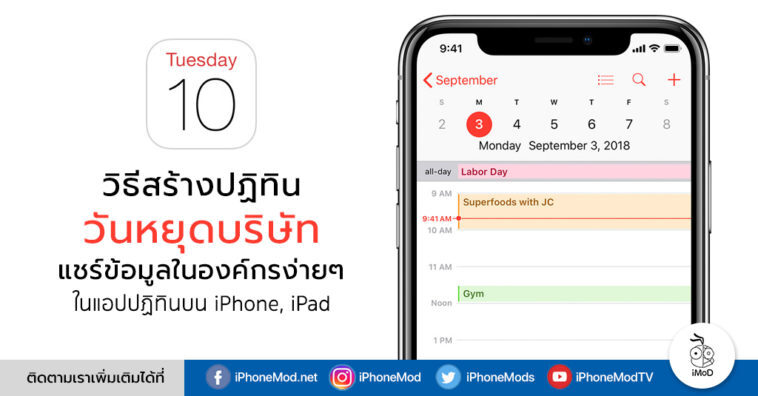Crafting a freelance contract is crucial for protecting both client and freelancer. This comprehensive guide will walk you through the essential elements, legal considerations, and best practices for creating a simple yet effective agreement. From defining the scope of work to protecting intellectual property rights, we’ll cover everything you need to know.
This guide will detail the crucial components of a freelance contract, from payment terms and deliverables to legal protections and dispute resolution. We’ll use clear examples and practical advice to ensure you’re well-equipped to create a legally sound contract that benefits all parties involved.
Essential Clauses for a Freelance Contract

A well-structured freelance contract is crucial for both the client and the freelancer. It clearly Artikels the scope of work, responsibilities, payment terms, and other vital aspects, mitigating potential disputes and ensuring a smooth working relationship. This section details essential clauses to include in your contract, promoting clarity and protection for all parties involved.
Payment Terms
Defining payment terms is paramount. Unclear payment structures can lead to misunderstandings and delays. Explicitly stating the amount, payment schedule, and accepted payment methods (e.g., check, wire transfer, PayPal) minimizes ambiguity. Including a detailed payment schedule, outlining when and how each payment will be made, is crucial. This could include milestones or deliverables for payment releases, preventing disputes about completed work.
It is also advisable to Artikel late payment penalties. A clear, concise statement on payment terms promotes a transparent and mutually beneficial relationship.
Deliverables, Timelines, and Milestones
Clearly defining deliverables, timelines, and milestones is essential to avoid misunderstandings and ensure the project’s successful completion. Deliverables should be specific, measurable, achievable, relevant, and time-bound (SMART). Timelines, specifying deadlines for each deliverable, provide a clear schedule for project completion. Milestones, representing significant points in the project, help track progress and provide checkpoints for both parties to assess the project’s status.
This clarity minimizes potential disputes about scope and timelines.
Clauses Protecting Both Parties
Protecting both the client and the freelancer is a core aspect of contract creation. Clauses should address intellectual property rights, confidentiality, and dispute resolution. A well-drafted clause outlining the ownership of intellectual property (e.g., copyrights, trademarks) is crucial. It is also vital to include a clause about confidentiality, requiring both parties to protect sensitive information. Defining a clear dispute resolution process, such as mediation or arbitration, can help address disagreements amicably and efficiently.
Payment Structures Comparison
| Payment Structure | Pros | Cons |
|---|---|---|
| Hourly | Provides flexibility, especially for projects with uncertain durations. Easy to track progress and cost. | Can be difficult to estimate the total cost upfront. May not be suitable for projects with fixed deliverables. |
| Project-Based | Provides a clear and predictable cost for a specific project. | May not be suitable for ongoing work or projects with variable work requirements. |
| Retainer | Suitable for ongoing work. Provides a predictable revenue stream. | May be expensive if the work performed is minimal during the billing period. |
Intellectual Property Clauses
Intellectual property (IP) clauses Artikel ownership and usage rights of any creative work developed during the project. These clauses are essential to avoid disputes regarding ownership. Examples include specifying whether the freelancer or the client owns the copyright to the work, if the client has the right to use the work for future projects, or if the freelancer retains certain rights.
Copyright agreements should be explicit and clear to avoid any future disagreements.
Termination Clause
A termination clause Artikels the conditions under which either party can terminate the agreement. It should specify the notice period required, the obligations of each party upon termination, and the handling of any outstanding work. A well-defined termination clause protects both parties in the event that unforeseen circumstances arise or the project needs to be prematurely discontinued. It should address how payments will be handled, and any outstanding work completed or compensation owed.
Legal Considerations and Best Practices

Creating a legally sound freelance contract is crucial for both freelancers and clients. This section Artikels essential legal considerations and best practices to ensure a mutually beneficial and legally protected agreement. A well-structured contract minimizes potential disputes and protects the interests of all parties involved.Understanding the legal framework surrounding freelance work is vital. Different jurisdictions have varying regulations concerning independent contractors, which can significantly impact the terms and conditions of a contract.
Consequently, seeking legal advice tailored to your specific location is strongly recommended.
Relevant Legal Regulations
Different countries and regions have specific laws and regulations that govern freelance contracts. These regulations often address issues such as worker classification, payment terms, and dispute resolution mechanisms. For instance, some jurisdictions may have specific requirements for the minimum wage to be paid to freelancers, while others may have regulations on the use of confidential information. Thorough research into the applicable laws in the relevant jurisdiction is essential.
Significance of Legal Counsel
Engaging legal counsel is highly recommended when creating a freelance contract. A lawyer specializing in contract law can provide valuable insight into the specific legal requirements of the jurisdiction and ensure the contract complies with all relevant regulations. They can also help tailor the contract to protect your specific interests, anticipate potential risks, and ensure a comprehensive agreement.
Moreover, legal counsel can review the contract for ambiguities or potential loopholes that might arise from specific clauses, reducing the risk of future disputes.
Best Practices for a Robust Freelance Contract
Creating a robust and legally sound freelance contract involves several best practices. These practices aim to prevent disputes and provide a clear framework for the working relationship.
- Clearly define the scope of work, deliverables, and timelines. This avoids misunderstandings about the project’s parameters and ensures that both parties are on the same page regarding expectations.
- Explicitly state payment terms, including payment schedules, methods, and any applicable taxes or deductions. A clear payment structure prevents disputes over amounts owed and when payments are due.
- Include provisions for intellectual property rights, outlining who owns the rights to the work produced. This prevents disputes about copyright ownership or the use of intellectual property.
- Detail the process for handling revisions and changes to the project scope. This clarifies how adjustments to the project will be handled and prevents disagreements over additional work or compensation.
Confidentiality Clauses
Protecting confidential information is crucial in many freelance projects. Confidentiality clauses should explicitly Artikel the types of information that are considered confidential and the obligations of both parties to maintain its secrecy. These clauses should specify the duration of confidentiality obligations and the penalties for breaches.
Dispute Resolution Provisions
Clearly outlining dispute resolution mechanisms is essential in any contract to manage potential disagreements effectively. These provisions should specify the procedures for resolving disputes amicably before resorting to formal legal action.
| Dispute Resolution Method | Description | Advantages | Disadvantages |
|---|---|---|---|
| Mediation | A neutral third party facilitates communication and negotiation between the parties to reach a mutually agreeable solution. | Cost-effective, less adversarial, preserves relationships. | Not legally binding, may not be successful in all cases. |
| Arbitration | A neutral third party, the arbitrator, hears evidence and arguments from both parties and makes a binding decision. | Faster and more efficient than litigation, confidential. | Binding decision may not be suitable for all cases, arbitrator’s decision may not be appealable. |
| Litigation | Formal legal proceedings in court. | Provides a legally binding resolution, enforceable by the courts. | Time-consuming, costly, and potentially damaging to relationships. |
Formatting and Structure of the Contract
A well-structured freelance contract is crucial for clarity and mutual understanding between the client and freelancer. Clear formatting and a concise tone contribute significantly to the contract’s effectiveness. This section will discuss the importance of precise language, various formatting styles, and the optimal presentation of the contract.Effective freelance contracts require precise and unambiguous language. Vague phrasing can lead to misunderstandings and disputes later.
Using clear, concise language ensures that both parties are on the same page regarding their responsibilities, deliverables, payment terms, and other crucial aspects of the agreement.
Importance of Clear and Concise Language
Clear and concise language minimizes ambiguity and ensures that both parties understand the terms of the agreement without any misinterpretations. This clarity prevents potential disputes and misunderstandings during the project’s execution. Precise language is essential for defining responsibilities, deliverables, timelines, and payment terms in a way that leaves no room for misinterpretation. This contributes to a smooth and successful project outcome.
Formatting Styles
Several formatting styles can be used to enhance the readability and professionalism of a freelance contract. A professional and easily understandable format will improve the clarity of the contract and avoid potential disputes. Examples include:
- Formal Style: This style uses formal language, proper grammar, and well-structured paragraphs. It prioritizes precision and avoids overly casual or colloquial expressions.
- Informal Style: This style might be appropriate for freelancers working with clients they know well, but even in this case, clarity and precision are paramount. It employs a more conversational tone while still maintaining a professional demeanor.
Presentation Methods
The chosen presentation method impacts how easily the contract can be reviewed and understood. A well-organized and easily accessible contract benefits both parties.
| Presentation Method | Description |
|---|---|
| Document (.doc, .docx) | Suitable for contracts that require significant editing or alterations. |
| PDF (.pdf) | Ideal for contracts that need to be legally binding and prevent unauthorized modifications. The PDF format preserves the original formatting and layout. |
| Online Platform | For contracts needing collaborative editing or digital signatures. |
Organizing the Contract
Using headings and subheadings is essential for organizing the contract effectively. This structure allows for easy navigation and quick access to specific clauses.
- Introduction: Clearly states the purpose of the contract and the parties involved.
- Project Scope: Defines the deliverables, timelines, and any specific requirements.
- Payment Terms: Artikels payment schedules, milestones, and any applicable fees.
- Intellectual Property Rights: Specifies ownership and usage rights for any created content.
- Termination Clause: Artikels conditions under which the contract can be terminated.
- Governing Law: Identifies the jurisdiction that will govern any disputes.
Using numbered lists and bullet points can enhance the readability and organization of the contract. These visual aids help the reader to easily follow the key points. Employing these formatting elements can help ensure the contract is easily understood and navigated by both parties.
Maintaining a Clear and Unambiguous Tone
A clear and unambiguous tone in the contract avoids ambiguity and fosters mutual understanding. Using precise and formal language will help ensure a strong and comprehensive contract.
Sample Contract Templates
Creating a comprehensive freelance contract is crucial for both the client and the freelancer. A well-drafted contract clearly Artikels the scope of work, payment terms, and responsibilities, mitigating potential disputes. This section provides sample sections of a freelance contract, illustrating different contract types and crucial clauses.Different freelance contracts cater to various services and projects. Each contract should be tailored to the specific needs and expectations of the parties involved.
Sample Freelance Contract Sections
These sections provide examples of key clauses found in a standard freelance contract. These are not exhaustive and should be adapted to the specific project.
- Project Description: This section clearly defines the project’s scope, deliverables, and timelines. For example, “The project entails designing a website for Acme Corporation, including a homepage, about us page, and contact form. The project timeline is 4 weeks, starting on October 26, 2023.” It should detail all the tasks involved, preventing misunderstandings later on.
- Payment Terms: Payment terms Artikel how and when payments will be made. A detailed example is: “Payment for the project will be made in two installments. The first installment of 50% of the total fee will be paid upon completion of the homepage design. The remaining 50% will be paid upon completion of the entire project and client approval.” This section should clearly specify the payment schedule, currency, and method of payment.
- Intellectual Property Rights: This section addresses ownership of the project’s output. For example: “All intellectual property rights to the website design, including but not limited to the graphic designs, logos, and code, will remain with [Freelancer’s Name]. However, Acme Corporation will have the right to use, reproduce, and distribute the website on a non-exclusive basis.” This is essential to prevent disputes over ownership.
- Confidentiality: This section details how confidential information will be handled. For instance, “During the course of the project, both parties agree to maintain the confidentiality of all sensitive information exchanged, including client data, financial details, and design specifications. This confidentiality obligation will continue after the completion of the project.” It Artikels obligations to maintain confidentiality.
Different Types of Freelance Contracts
Different freelance contracts address varying project needs. Here are examples:
- Web Design Contract: This contract Artikels the design and development of a website, including specifications, payment schedules, and timelines. It should detail deliverables such as wireframes, mockups, and final website code. Specific requirements for the project should be clearly detailed, such as content provided by the client.
- Writing Contract: This contract covers the creation of written content, such as articles, blog posts, or marketing copy. It should specify the word count, style guidelines, and deadline for each piece of content. The contract should detail the scope of work and deliverables to ensure a clear understanding between the parties.
- Consulting Contract: This contract Artikels the services provided by a consultant, including the scope of work, deliverables, and payment terms. It may include specific deliverables such as reports, presentations, or strategy documents. The contract should clearly state the consultant’s responsibilities and the expected outcomes of the project.
Illustrative Payment Terms
Payment terms are crucial for both parties. Here’s a detailed example:
| Milestone | Description | Payment |
|---|---|---|
| Design Mockups | Delivery of initial website mockups | $500 (50% of total) |
| Website Development | Completion of website development | $500 (50% of total) |
| Final Delivery | Final website delivery and client approval | $0 (Full payment) |
“Payment should be made via wire transfer to the account specified in the contract.”
This example illustrates a two-part payment structure for a web design project.
Creating Different Contract Versions
Different scenarios require adaptable contracts. To accommodate various situations, multiple versions can be created. These versions could include contracts for one-time projects, ongoing projects, or projects with specific deliverables. Each version should clearly Artikel the unique parameters and responsibilities.
Illustrative Examples of Well-Drafted Contracts

A well-structured freelance contract is crucial for both the freelancer and the client. It clearly Artikels the scope of work, payment terms, and responsibilities, mitigating potential disputes and ensuring a smooth working relationship. These examples demonstrate best practices, offering a template for creating a legally sound and mutually beneficial agreement.
Detailed Descriptions of Well-Structured Contracts
Illustrative examples of well-structured freelance contracts highlight several key elements. They meticulously define the project’s scope, including specific deliverables, timelines, and expected outcomes. Payment terms are clearly articulated, detailing payment schedules, milestones, and any applicable deductions. Both parties’ responsibilities are Artikeld in detail, reducing ambiguity and preventing misunderstandings. Dispute resolution mechanisms are also included, providing a framework for addressing potential conflicts.
These contracts clearly communicate expectations and obligations, protecting both parties involved.
Examples of Freelance Contracts Including Essential Clauses
These illustrative contracts incorporate all essential clauses, ensuring comprehensive coverage of crucial aspects. Each contract specifies the project’s nature, deliverables, timelines, and payment terms. Intellectual property rights are often clearly defined, specifying ownership and usage rights. Confidentiality clauses are included to protect sensitive information exchanged during the project. Termination clauses Artikel the conditions under which either party can end the agreement.
These elements are essential for legally sound and mutually beneficial contracts.
How to Use Examples to Guide Contract Creation
Analyzing well-drafted freelance contracts serves as a valuable guide. Understanding the structure, language, and content of these examples allows for the creation of a contract tailored to specific needs. Study the clarity and conciseness of each clause. Identify the inclusion of essential clauses and ensure the contract addresses specific circumstances. By carefully reviewing and adapting these examples, a freelancer can create a robust and effective contract.
Comparison of Contract Types with Illustrative Examples
| Contract Type | Description | Illustrative Example (Design) | Illustrative Example (Writing) | Illustrative Example (Consulting) |
|---|---|---|---|---|
| Design Contract | Specifies the design project, including deliverables, timelines, and payment terms. | A detailed design brief outlining specific graphic design requirements for a website, including revisions and deadlines. Payment schedules are Artikeld, milestones are defined, and intellectual property rights are clearly stated. | A contract for website copywriting specifying the number of pages, style guidelines, and deadlines. Payment is Artikeld per page, and revisions are addressed. | A contract for a marketing strategy, specifying the deliverables, timelines, and scope of the consulting work. Payment is based on deliverables and milestones. |
| Writing Contract | Artikels the writing project, including the content type, word count, deadlines, and payment terms. | A contract for logo design specifying the deliverables, including different logo formats, deadlines, and revisions. Payment is structured for each deliverable. | A detailed contract for a novel, outlining the word count, deadlines, and payment schedule. Ownership and usage rights are clearly defined. | A consulting contract for business development strategy, specifying the deliverables, including market research, recommendations, and timelines. Payment is tied to the successful implementation of recommendations. |
| Consulting Contract | Defines the scope of consulting services, including deliverables, timelines, and payment terms. | A contract for website layout design, including wireframes, mockups, and deliverables. Payment schedules are structured with milestones. | A contract for blog posts, specifying topics, deadlines, and payment terms. Ownership of content is clarified. | A contract for a business strategy session, including the deliverables, timeline, and payment structure. Confidentiality clauses are included. |
Client and Freelancer Responsibilities
Defining clear responsibilities for both the client and the freelancer is crucial for a successful project. A well-defined contract outlining these roles prevents misunderstandings and ensures both parties are aware of their obligations. This section details the essential responsibilities, providing examples for various freelance types and a sample contract incorporating these elements.
Defining Client Responsibilities
Client responsibilities encompass providing necessary resources, clear instructions, and timely feedback. The client is responsible for providing the freelancer with all required materials, information, and access to necessary systems or platforms. This also includes setting clear project goals, deadlines, and expectations. Effective communication and timely responses to the freelancer’s queries are critical to ensure smooth project execution.
The client’s prompt feedback on deliverables is essential for the freelancer to make necessary adjustments and meet project specifications.
Defining Freelancer Responsibilities
Freelancer responsibilities center on delivering high-quality work, adhering to deadlines, and maintaining open communication. The freelancer is obligated to produce deliverables that meet the agreed-upon specifications and quality standards. This includes adhering to established timelines and reporting any potential roadblocks or issues promptly. The freelancer must maintain professional communication, providing updates and addressing client concerns effectively.
Deliverables for Different Types of Freelance Work
The nature of deliverables varies significantly depending on the type of freelance work. Here are some illustrative examples:
- Writing and Editing: Deliverables may include well-researched articles, polished website copy, or meticulously edited manuscripts. Specific deliverables should be Artikeld, such as the word count, target audience, and tone of voice for the writing.
- Graphic Design: This might involve logos, marketing materials, or website designs. Specific design specifications, file formats, and required revisions should be Artikeld in the contract.
- Web Development: Deliverables include fully functional websites, web applications, or mobile apps. This often involves specifying features, functionalities, and performance requirements.
- Software Development: This includes developing software applications, fixing bugs, or adding features to existing applications. The specific features, functions, and the technical specifications must be clearly defined in the contract.
Sample Contract Detailing Responsibilities
“Both parties acknowledge that clear communication and timely feedback are essential for the successful completion of this project. The client is responsible for providing all necessary resources, including [specific resources], and maintaining open communication channels. The freelancer agrees to deliver [specific deliverables] by [date], and to report any significant delays or issues within [timeframe]. Both parties commit to maintaining professional communication throughout the project.”
Key Responsibilities of Each Party
| Freelancer | Client |
|---|---|
| Deliver high-quality work according to specifications. | Provide all necessary resources and information. |
| Adhere to agreed-upon deadlines. | Establish clear project goals and timelines. |
| Maintain professional communication. | Provide timely feedback on deliverables. |
| Report any issues or delays promptly. | Address freelancer queries promptly and professionally. |
Protecting Intellectual Property Rights

Protecting intellectual property (IP) rights is crucial in freelance contracts to safeguard the ownership and use of creative works, inventions, and other valuable assets. Clearly defining ownership and usage rights ensures both the client and freelancer are protected from unauthorized use or infringement. This section details strategies to safeguard IP rights within freelance agreements.
Types of Intellectual Property Rights
Intellectual property encompasses various rights, including copyrights, trademarks, patents, and trade secrets. Understanding these different types is essential for appropriate protection. Copyrights protect original works of authorship, such as written material, music, and artwork. Trademarks safeguard brand identities and logos. Patents cover inventions and discoveries.
Trade secrets protect confidential information.
Licensing Agreements for Intellectual Property
Clearly defining the terms of use is vital for both parties. Licensing agreements Artikel the extent of usage rights granted to the client, specifying whether it’s exclusive or non-exclusive. This section will provide various licensing options for freelancers to consider. For example, a non-exclusive license allows the client to use the work alongside others, whereas an exclusive license grants the client sole usage rights.
These agreements must clearly define the scope of usage (e.g., specific platforms, territories, or duration).
Structuring Clauses for IP Protection
Clauses in the contract must clearly state who owns the IP rights and the terms under which the client can use the work. A well-structured clause should specify that the freelancer retains ownership of the work unless otherwise explicitly stated and agreed upon in writing. This ownership transfer should be contingent on factors such as payment terms and agreement completion.
For example, a clause stating “All intellectual property rights related to the deliverables remain with the freelancer unless otherwise agreed upon in writing and payment is completed.” Another example: “The freelancer grants the client a non-exclusive license to use the deliverables for [specific purpose/duration/territory].” Detailed examples and precise language are paramount.
IP Protection Options in Freelance Contracts
| IP Right | Description | Protection Strategy in Contract |
|---|---|---|
| Copyright | Protects original works of authorship. | Clearly state freelancer retains copyright unless explicitly transferred. Define the license granted to the client (e.g., non-exclusive, limited usage). |
| Trademark | Protects brand names and logos. | Specify whether the freelancer or client owns trademarks related to the project. If the client uses a trademark, ensure proper use and attribution. |
| Patent | Protects inventions and discoveries. | Artikel who owns the patent rights, or if the client has a license to use it. |
| Trade Secret | Protects confidential information. | Include a clause outlining the confidentiality of the trade secret. Define what constitutes a trade secret and the consequences of disclosure. |
Final Wrap-Up

In conclusion, this guide has provided a comprehensive overview of creating a robust freelance contract. By understanding the essential clauses, legal considerations, and formatting best practices, freelancers and clients can ensure a smooth and successful working relationship. Remember, a well-drafted contract is key to avoiding potential disputes and protecting the interests of all parties.